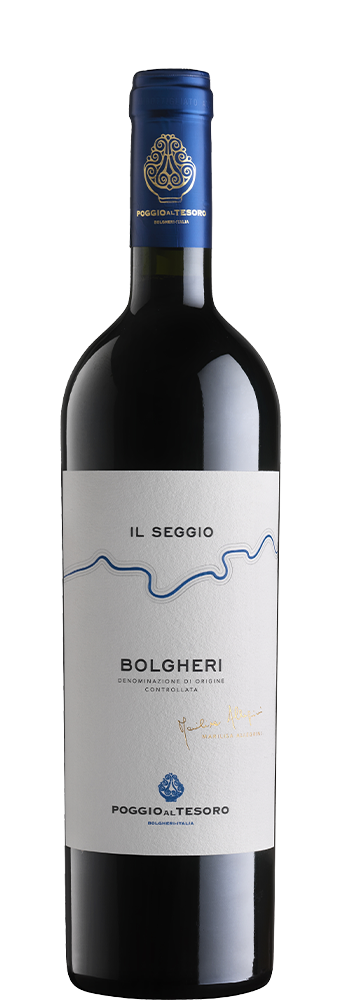Il Seggio

Il Seggio
Bolgheri Rosso D.O.C.
Merlot 50%, Cabernet Sauvignon 20%, Cabernet Franc 20%, Petit Verdot 10%
The Seggio river is the largest watercourse in the municipality of Castagneto Carducci. Its source is up in the metalliferous hills of Sassetta, an area that was already well known in the Etruscan period, which is extremely rich in underground deposits of ferrous minerals. It cuts across the entire area of Bolgheri and its alluvial debris enriches the characteristic clay soils with precious large pebbles, thus ensuring excellent drainage of the soil. This Bolgheri Rosso is produced with typical grape varieties, carefully harvested and vinified to ensure density and concentration but also to create a very fresh and easy-drinking style of wine.
Climate Trend
The 2014 vintage was characterised by a mild winter. Rainfall in January and February allowed for the accumulation of sufficient water reserves which were essential for spring budding. The first months of summer saw average temperatures and sunny days alternating with frequent thunderstorms, thus ensuring a slow and regular development. Significantly, a green harvest made it possible to regulate the vines’ load by eliminating the abundant excess bunches. From the end of July, the rains gave way to the highest temperatures in August and September, allowing for the complete and uniform ripening of the grapes, also thanks to careful management of the leaf wall. The wines of this vintage have elegance and finesse which are rare for this area. It is a vintage that might surprise us.

-
-
grape varieties
Merlot 50%, Cabernet Sauvignon 20%, Cabernet Franc 20%, Petit Verdot 10%
-
-
vineyard location
Via Bolgherese, Cabernet Sauvignon (3.00 ha – 7.40 ac); Le Sondraie, Merlot, Cabernet Franc, Cabernet Sauvignon and Petit Verdot (12,00 ha – 29.65 ac)
-
-
capacities
375 ml • 750 ml • 1,5 L • 3 L
-
-
vinification
Grapes are de-stemmed then soft pressed to partially rupture of the berries
ageing
15 months in 225 litres French oak barriques (30% new, 70% second use)
fermentation
In temperature controlled stainless steel tanks
malolactic fermentation
Carried out naturally in barriques in November